Ever wondered why bartenders and beverage enthusiasts get excited when discussing drinks that start with S /beverages that start with s? From sophisticated cocktails that grace upscale lounges to refreshing sodas that cool summer afternoons, drinks That Start With S dominate menus worldwide. Whether you’re mixing your first mocktail or crafting complex cocktails, this letter offers an incredible variety that’ll surprise even seasoned drink connoisseurs.
Statistics show that nearly 30% of popular beverage names begin with the letter S, making it the most beverage rich letter in the alphabet. This comprehensive guide explores 90+ drinks spanning both alcoholic drinks and non-alcoholic drinks, each with unique flavors, histories, and cultural significance.
You’ll discover classic sodas that shaped American culture, international beverages that transport you across continents, and modern craft creations that push flavor boundaries. Ready to embark on this alphabetical adventure?
Non Alcoholic Drinks That Start With S
Quench your thirst with this flavorful list of non alcoholic drinks that start with S. From smoothies to sodas, each one offers a tasty way to stay refreshed.
1. Sprite
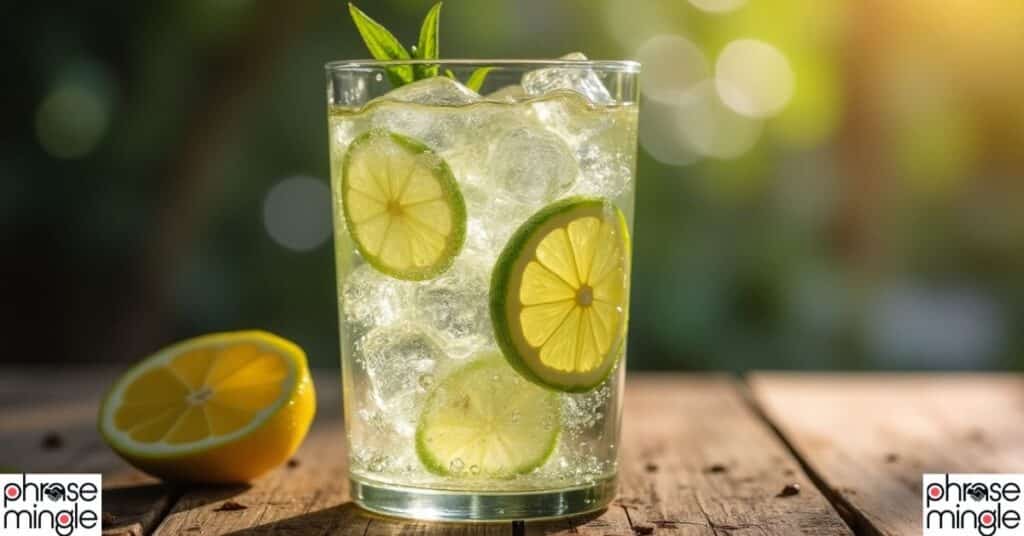
Sprite revolutionized the lemon lime soda category when Coca Cola launched it in 1961. This caffeine free beverage combines crisp lemon and lime flavors with carbonated water, creating a refreshing taste that’s become synonymous with clarity and purity. Unlike many sodas, Sprite’s transparent appearance matches its clean, uncomplicated flavor profile.
Global variations include Sprite Zero for health conscious consumers and seasonal flavors like Sprite Cranberry during holidays. The brand’s “Obey Your Thirst” campaign positioned it as the anti cola, appealing to consumers seeking authentic refreshment without artificial complexity.
2. Squirt
Squirt stands alone in the grapefruit soda market, offering a tart sweet balance that’s both refreshing and distinctive. Created in 1938, this pink hued beverage contains real grapefruit juice, giving it a citrus authenticity that artificial flavors can’t match.
Popular in Southwestern United States and Mexico, Squirt pairs exceptionally well with spicy foods. Its unique flavor profile makes it an excellent mixer for cocktails, particularly those requiring citrus complexity without overwhelming sweetness.
3. Sierra Mist
Sierra Mist entered the lemon lime category as PepsiCo’s answer to Sprite, featuring natural lemon and lime flavors with a slightly different carbonation level. The brand evolved through several reformulations, eventually becoming Sierra Mist Natural with cane sugar instead of high fructose corn syrup.
This soda offers a cleaner taste profile than many competitors, making it popular among consumers seeking natural ingredients. Its lighter carbonation creates a smoother drinking experience, particularly appealing to those who find other lemon lime sodas too aggressive.
4. Sunkist: Drinks That Start With S
Sunkist orange soda brings vibrant citrus flavor to the soft drink world, combining artificial and natural orange flavors for a taste that’s both familiar and exciting. The bright orange color immediately signals its fruit inspiration, while the sweet tart balance appeals to all age groups.
Originally created in 1979, Sunkist has expanded to include multiple fruit flavors while maintaining its position as America’s favorite orange soda. The brand’s association with California’s orange groves adds authenticity to its marketing message.
5. Seagram’s Ginger Ale
Seagram’s Ginger Ale represents premium quality in the ginger ale category, offering a sophisticated balance of ginger spice and carbonated refreshment. Unlike mass market alternatives, Seagram’s uses real ginger extract, creating complexity that elevates it beyond simple mixers.
This ginger ale serves dual purposes: standalone refreshment and premium cocktail mixer. Bartenders prefer Seagram’s for martinis and highballs because its clean flavor profile doesn’t compete with spirits while adding subtle spice notes.
6. Sunny D
Sunny D sparked childhood memories and nutritional controversies in equal measure. This orange flavored drink combines fruit juices with artificial flavors, creating a taste that’s distinctly different from pure orange juice or traditional sodas.
Despite criticism about its artificial ingredients, Sunny D remains popular for its unique flavor profile and vibrant color. Recent formulations have reduced sugar content and artificial additives, responding to health conscious consumers while maintaining the distinctive taste that made it famous.
7. Stewart’s Root Beer & Cream Soda
Stewart’s represents craft soda excellence, offering both root beer and cream soda varieties that showcase premium ingredients and traditional brewing methods. Their root beer features sassafras and vanilla notes, while the cream soda delivers rich, creamy sweetness without excessive artificial flavoring.
These sodas appeal to consumers seeking authentic flavors reminiscent of old fashioned soda fountains. Stewart’s glass bottles add to the premium experience, making these drinks popular for special occasions and sophisticated palates.
8. Schweppes Tonic Water
Schweppes tonic water isn’t just a mixer it’s a sophisticated beverage with a complex history rooted in medicinal quinine. The distinctive bitter sweet flavor profile makes it essential for classic cocktails like gin and tonic, while its carbonation adds effervescence to any drink.
Modern Schweppes maintains the original recipe’s integrity while offering variations like diet and naturally flavored versions. The brand’s heritage dating back to 1783 adds authenticity that newer tonic water brands struggle to match.
9. Snapple
Snapple revolutionized ready to drink tea by combining fruit flavors with traditional tea bases, creating a category that bridges beverages and refreshment. Their “made from the best stuff on Earth” slogan emphasized natural ingredients before natural became trendy.
Popular flavors include Peach Tea, Lemon Tea, and fruit punch varieties that offer more complexity than simple fruit drinks. Snapple’s glass bottles preserve flavor integrity while the wide mouth design makes drinking more enjoyable than narrow necked alternatives.
10. SoBe
SoBe targeted health conscious consumers with best flavors and functional ingredients like vitamins, herbs, and energy enhancers. These beverages combined tropical fruit flavors with perceived health benefits, creating a unique market position.
Popular varieties included SoBe Energy with caffeine and ginseng, and fruit flavored options with added vitamins. The brand’s colorful packaging and unconventional flavor combinations attracted younger consumers seeking alternatives to traditional sodas.
11. Sundrop: Drinks That Start With S
Sundrop offers a regional favorite that combines citrus flavoring with caffeine, creating an energy boosting soda that’s particularly popular in the Southeastern United States. Its unique formula includes both artificial and natural flavors, resulting in a taste that’s distinctly different from other citrus sodas.
The caffeine content makes Sundrop popular as a morning beverage alternative to coffee, while its citrus flavor provides refreshment throughout the day. Regional loyalty keeps this brand strong in specific markets despite limited national distribution.
12. Strawberry Crush
Strawberry Crush extends the Crush brand’s fruit flavored soda lineup with authentic strawberry taste and vibrant pink color. This soda appeals to consumers seeking fruit flavoring beyond traditional orange, grape, and cherry options.
The strawberry flavor profile balances sweetness with slight tartness, creating a refreshing drink that works well both alone and as a cocktail mixer. Its distinctive color makes it popular for themed parties and special occasions.
13. Starbucks Signature Drinks
Starbucks has transformed coffee culture by creating signature beverages that blend traditional coffee with innovative flavors and preparations. Their Frappuccinos combine coffee with ice and flavorings, creating smoothie-like drinks that appeal to both coffee lovers and those preferring sweeter beverages.
Seasonal specialties like Pumpkin Spice Latte have created cultural phenomena, while year round favorites like Caramel Macchiato showcase the brand’s ability to balance coffee intensity with complementary flavors. These drinks often serve as non alcoholic drinks alternatives to traditional cocktails in social settings.
14. Spanish Coffee
Traditional Spanish Coffee represents a sophisticated preparation method that combines strong coffee with spices like cinnamon and sometimes orange peel. This differs significantly from American coffee culture, emphasizing flavor complexity over caffeine delivery.
Preparation involves careful attention to water temperature, grind size, and steeping time. The result delivers rich, full bodied coffee with subtle spice notes that complement rather than overwhelm the coffee’s natural flavors. This style influences modern specialty coffee shops worldwide.
15. Spiced Chai Tea
Spiced Chai Tea brings Indian tea traditions to Western palates through complex spice blends including cardamom, cinnamon, ginger, and cloves. Authentic chai involves simmering tea leaves with spices and milk, creating a warming beverage that’s both comforting and energizing.
Commercial chai variations often simplify the spice blend, but authentic preparations showcase the complexity possible when traditional methods meet quality ingredients. The drink’s popularity has led to chai flavored everything from ice cream to cocktails.
16. Samoa Cookie Latte Drinks That Start With S
Samoa Cookie Latte represents seasonal coffeehouse creativity, combining coffee with flavors inspired by the popular Girl Scout cookie. These drinks typically feature caramel, chocolate, and coconut flavors that recreate the cookie’s taste profile in liquid form.
Limited time offerings like this create excitement and urgency among consumers while showcasing baristas’ ability to translate familiar flavors into coffee beverages. Such drinks often bridge the gap between coffee and dessert, appealing to customers seeking indulgent treats.
17. Sweet Tea
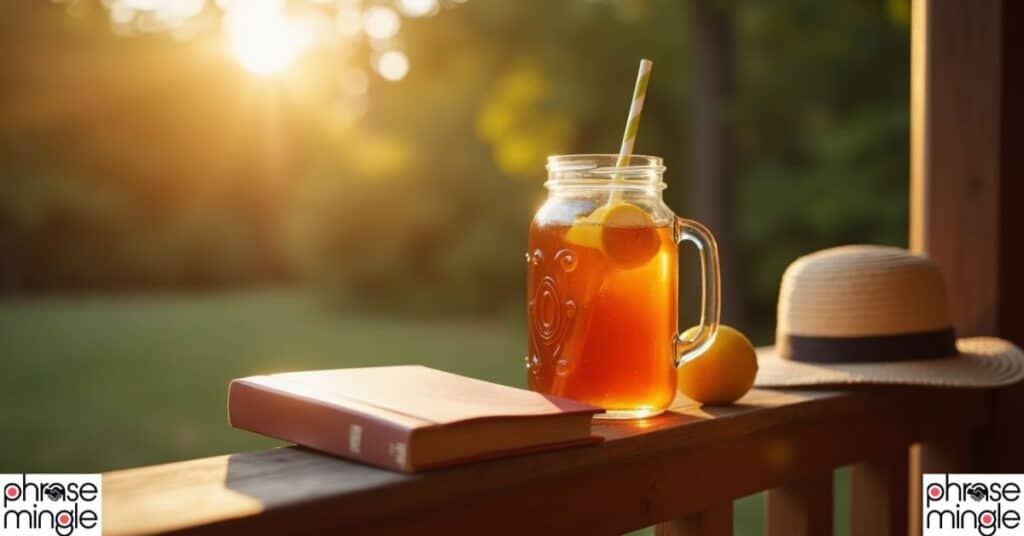
Sweet Tea represents Southern American culture in liquid form, combining black tea with substantial sugar added during brewing while the tea is hot. This process creates complete sugar dissolution impossible with cold additions, resulting in perfectly sweetened refreshment.
Regional variations include different tea types, sugar levels, and serving methods. Some areas prefer extra sweet versions, while others add lemon or fruit flavors. The drink’s cultural significance extends beyond refreshment to represent hospitality and tradition.
18. Sencha Green Tea
Sencha Green Tea showcases Japanese tea craftsmanship through careful cultivation, processing, and preparation methods. This tea offers grassy, vegetal flavors with subtle sweetness and astringency that changes throughout multiple infusions.
Proper preparation involves specific water temperatures and steeping times that highlight the tea‘s delicate character. Health benefits include antioxidants and amino acids that provide both immediate refreshment and long-term wellness support.
19. Strawberry Tea
Strawberry Tea combines traditional tea bases with natural or artificial strawberry flavoring, creating fruity beverages that appeal to those preferring flavored over plain teas. These can involve herbal tea blends or traditional black tea with added fruit essence.
Quality varies significantly between brands, with premium versions using real fruit pieces and natural flavors while budget options rely heavily on artificial ingredients. The best versions balance tea character with fruit flavor without overwhelming either component.
IF YOU WANT TO READ ABOUT VODKA AND SPRITE CLICK HERE
20. Swiss Miss Hot Chocolate
Swiss Miss represents convenient comfort in powdered form, offering consistent hot chocolate flavor through carefully balanced cocoa, sugar, and milk powder combinations. While not gourmet, it provides reliable satisfaction for quick warm beverage needs.
The brand’s success comes from consistent quality and convenience rather than premium ingredients. Various flavors and formulations cater to different preferences, from sugar free options to marshmallow enhanced versions that add textural interest.
21. Soy Milk Drinks That Start With S
Soy Milk pioneered the plant based milk alternative market, offering protein content comparable to dairy milk while accommodating lactose intolerant and vegan consumers. Made from soaked, ground, and strained soybeans, this non alcoholic drink provides complete proteins and essential amino acids.
Modern soy milk varieties include flavored options like vanilla and chocolate, plus barista blends designed for coffee applications. The neutral flavor profile makes it versatile for both drinking and cooking applications, though taste preferences vary significantly among consumers.
22. Silk Almond Milk
Silk Almond Milk expanded plant based options beyond soy, offering lighter texture and naturally sweet flavor that appeals to broader consumer bases. Made from ground almonds and water, this dairy alternative provides vitamin E and healthy fats while maintaining lower calorie counts than traditional milk.
Various flavors and formulations include vanilla, chocolate, and unsweetened versions that cater to different dietary needs. The brand’s marketing emphasized taste over nutrition, helping mainstream acceptance of plant based alternatives among traditional dairy consumers.
23. Skim Milk
Skim Milk removes most fat content from whole milk while retaining protein, calcium, and other essential nutrients. This creates a lighter tasting beverage that satisfies health conscious consumers seeking dairy benefits without excess calories.
The fat removal process affects both taste and mouthfeel, creating thinner consistency that some consumers find less satisfying than whole milk. However, skim milk’s versatility in coffee, cereal, and cooking applications maintains its popularity among calorie conscious consumers.
24. Strawberry Milk
Strawberry Milk combines milk with strawberry flavoring and coloring, creating a sweet, pink beverage that appeals particularly to children. Commercial versions often use artificial flavors and colors, while homemade alternatives can incorporate real strawberry puree or syrup.
The sweet flavor profile makes strawberry milk popular as a smoothie base or standalone treat. Some brands offer organic or natural versions that use real fruit ingredients, appealing to health conscious parents seeking better options for their children.
25. Sheep’s Milk
Sheep’s Milk represents artisanal dairy alternatives with higher fat and protein content than cow’s milk. Popular in Mediterranean regions, this milk offers rich, creamy texture with distinctive flavor that’s both familiar to most American consumers.
Limited availability and higher costs restrict sheep’s milk to specialty markets, but its unique nutritional profile and taste make it popular among consumers seeking unusual dairy experiences. The milk works particularly well in cheese making applications.
26. Sweetened Condensed Milk Drinks
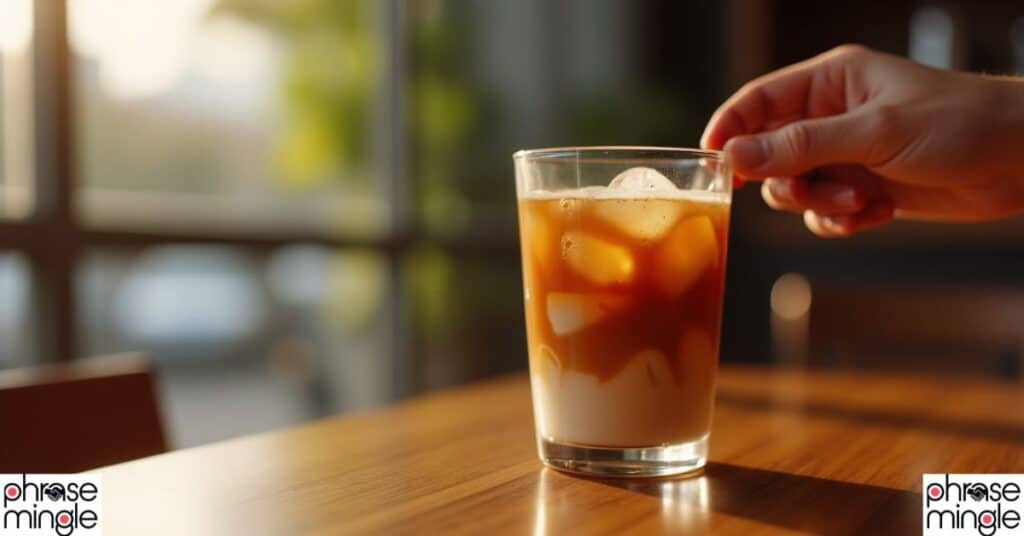
Sweetened Condensed Milk Drinks appear in various global cuisines, from Vietnamese coffee to Latin American tres leches beverages. These drinks utilize condensed milk’s concentrated sweetness and creamy texture to create rich, satisfying beverages.
Popular applications include iced coffee preparations where condensed milk provides both sweetening and creaminess in single additions. The shelf stable nature of condensed milk makes these drinks popular in regions with limited refrigeration infrastructure.
27. Strawberry Smoothie
Strawberry Smoothie represents the perfect introduction to smoothie culture, combining familiar fruit flavors with nutritious ingredients like yogurt, milk, or plant based alternatives. Fresh strawberries provide vitamin C and antioxidants, while frozen versions offer convenient year round availability.
Quality strawberry smoothies balance fruit sweetness with protein sources and healthy fats, creating satisfying beverages that work as meal replacements or healthy snacks. Preparation techniques affect texture significantly, with proper blending creating smooth consistency without grittiness.
28. Spinach Smoothie
Spinach Smoothie showcases how vegetables can enhance smoothies without overwhelming fruit flavors. Fresh spinach adds iron, vitamins, and minerals while contributing minimal flavor when properly balanced with fruits like bananas, berries, or tropical options.
The key to successful spinach smoothies involves proper ratios and ingredient selection that mask spinach’s earthiness while maintaining nutritional benefits. These smoothies appeal to health conscious consumers seeking convenient vegetable intake.
29. Shake Varieties
Shake varieties span from traditional milkshakes to protein enhanced fitness drinks, each serving different consumer needs and preferences. Classic milkshakes combine ice cream with milk and flavorings, creating indulgent treats that prioritize taste over nutrition.
Protein shakes target fitness enthusiasts with formulations designed to support muscle building and recovery. These functional beverages often sacrifice some palatability for nutritional benefits, though modern formulations have significantly improved taste profiles.
30. Slurpee
Slurpee represents 7 Eleven’s frozen beverage innovation, combining flavored syrups with finely shaved ice to create unique texture experiences. The semi liquid, semi solid consistency appeals to consumers seeking refreshment with entertainment value.
Popular flavors range from fruit options like cherry and blue raspberry to soda flavors like Coca Cola and Mountain Dew. The self serve format allows customers to create custom flavor combinations, adding interactive elements to the purchase experience.
31. Slushie
Slushie encompasses various frozen beverages that combine ice, flavorings, and sometimes carbonation to create refreshing summer treats. Unlike Slurpees, slushies can be made at home using simple equipment and ingredients.
Quality varies significantly based on ice texture, flavor concentration, and preparation methods. The best slushies achieve smooth ice consistency without being too watery or too chunky, while flavor balance prevents overwhelming sweetness or artificial taste.
32. Smoothie Bowl Drinks
Smoothie Bowl Drinks represent Instagram worthy nutrition that combines thick smoothie bases with elaborate toppings and presentations. These beverages blur lines between drinks and meals, offering customizable nutrition with visual appeal.
Popular bases include açaí, pitaya, and green smoothie combinations that provide colorful backgrounds for toppings like granola, fresh fruit, nuts, and seeds. The presentation aspect makes these drinks popular on social media platforms.
33. Supplement Shakes
Supplement Shakes target specific nutritional goals through protein powders, meal replacement formulas, and specialized ingredients. These functional beverages prioritize nutrition over taste, though modern formulations have significantly improved palatability.
Popular categories include post workout recovery shakes, meal replacement options for weight management, and specialized formulations for specific dietary needs. Quality varies significantly between brands, with premium options offering better taste and ingredient profiles
34. Simply Lemonade
Simply Lemonade elevated the bottled lemonade category by emphasizing natural ingredients and fresh taste. The brand’s success comes from delivering homemade lemonade taste in convenient packaging, appealing to consumers seeking quality over convenience compromises.
Various flavors extend beyond traditional lemon to include raspberry, strawberry, and seasonal options that maintain the brand’s fresh taste profile. The premium positioning allows higher pricing while delivering perceived value through superior taste.
35. Sparkling Water
Sparkling Water has exploded in popularity as consumers seek healthier alternatives to traditional sodas. Plain sparkling water offers carbonation satisfaction without calories, sugar, or artificial ingredients, while flavored versions add subtle taste without sweetness.
Premium brands emphasize water source, carbonation methods, and natural flavoring to differentiate from basic club soda. Health trends favoring hydration and reduced sugar intake continue driving category growth across all demographic segments.
36. San Pellegrino
San Pellegrino represents Italian sparkling water tradition with naturally occurring carbonation and distinctive mineral content. The brand’s association with fine dining and European sophistication positions it as premium refreshment rather than simple hydration.
The mineral content affects both taste and perceived health benefits, while the iconic glass bottle adds to the premium experience. Flavored varieties maintain the brand’s sophisticated positioning while offering broader appeal.
37. Switchel
Switchel brings colonial era drinking vinegar traditions to modern health conscious consumers through combinations of apple cider vinegar, ginger, and natural sweeteners. This fermented beverage offers probiotic benefits while delivering unique flavor profiles.
Modern switchel variations include different vinegar types, spice combinations, and carbonation levels that appeal to consumers seeking functional beverages with historical authenticity. The tangy sweet flavor profile appeals to adventurous drinkers.
38. Sorrel Drink
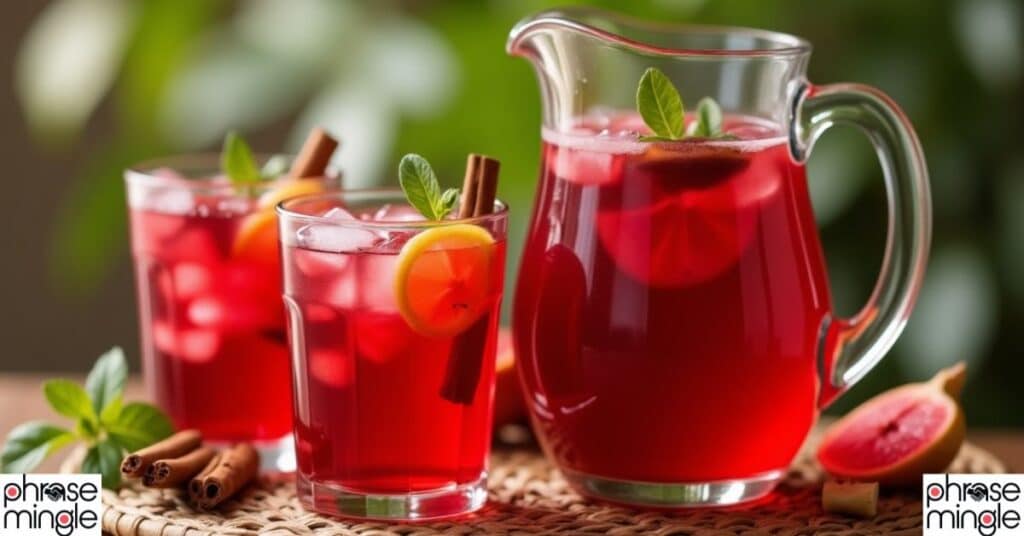
Sorrel Drink represents Caribbean tradition through hibiscus flower preparations that create tart, refreshing beverages with beautiful ruby color. Traditional preparations involve steeping dried hibiscus with spices like ginger and cinnamon, then sweetening to taste.
The high vitamin C content and antioxidant properties provide health benefits beyond refreshment, while the distinctive tart flavor offers alternatives to sweet tropical drinks. Preparation methods vary significantly between islands and families.
39. Soursop Juice
Soursop Juice showcases tropical fruit flavors with creamy texture and complex taste profiles combining sweet and tart elements. This fruit, popular in Caribbean and Latin American cuisines, offers unique flavors unfamiliar to many North American consumers.
Health claims surrounding soursop include antioxidant and anti inflammatory properties, though scientific evidence varies. The unusual flavor profile appeals to consumers seeking fruit experiences beyond common tropical options.
40. Sugarcane Juice
Sugarcane Juice represents fresh pressed sweetness popular in tropical regions worldwide. Street vendors often prepare this drink fresh using mechanical presses, creating natural sweetness without artificial additives or processing.
The high sugar content provides quick energy, while minimal processing preserves nutrients often lost in refined sugar production. Fresh preparation ensures optimal flavor, though pasteurized versions offer longer shelf life for commercial distribution.
41. Sumac Drink
Sumac Drink brings Middle Eastern traditions to Western palates through tart, refreshing beverages made from sumac berries. The distinctive sour flavor provides alternatives to citrus based drinks while offering unique cultural experiences.
Traditional preparation involves steeping sumac berries in water, then straining and sweetening the resulting liquid. The deep red color and tart flavor make sumac drinks particularly refreshing in hot climates.
42. Salty Lassi
Salty Lassi represents Indian yogurt drink traditions that combine cultured dairy with spices and salt rather than sweet flavors. This savory beverage aids digestion while providing probiotics and cooling effects in hot weather.
Popular variations include mint, cumin, and black salt additions that enhance flavor complexity. The drink’s cooling properties make it popular alongside spicy foods, while probiotic benefits appeal to health conscious consumers.
43. Sikhye
Sikhye showcases Korean sweet rice beverage traditions through fermented rice preparations that create mildly sweet, refreshing drinks. Traditional preparation involves malted barley enzymes that convert rice starches to sugars, creating natural sweetness.
Modern commercial versions offer convenient access to this traditional drink, though flavors may differ from homemade preparations. The subtle sweetness and unique texture appeal to consumers seeking authentic Korean beverage experiences.
44. Suero
Suero represents Latin American whey drink traditions that utilize cheese making byproducts to create nutritious, protein rich beverages. These drinks often incorporate fruit flavors and natural sweeteners to enhance palatability.
The high protein content and probiotic properties provide nutritional benefits, while various flavor combinations cater to different regional preferences. Sustainability aspects appeal to environmentally conscious consumers seeking waste reduction solutions.
45. Sioux City Sarsaparilla
Sioux City Sarsaparilla brings Wild West nostalgia to modern consumers through traditional sarsaparilla flavoring and vintage inspired packaging. This root beer relative offers more complex herbal flavoring than mainstream alternatives.
The brand emphasizes authenticity and traditional preparation methods, appealing to consumers seeking craft soda experiences. Limited distribution adds to the premium positioning and collector appeal among soda enthusiasts.
Alcoholic Drinks that start with s
Explore a spirited selection of alcoholic drinks that start with S. From classic cocktails to bold blends, these options bring flavor and flair to any occasion.
46. Screwdriver
The Screwdriver epitomizes cocktail simplicity, combining vodka with fresh orange juice in ratios that allow both ingredients to shine. This classic cocktail gained popularity during the 1950s when American workers in the Persian Gulf allegedly stirred the drink with screwdrivers, giving birth to its memorable name.
Quality Screwdrivers depend heavily on fresh orange juice rather than processed alternatives. Premium vodkas contribute smoothness, while the orange juice provides natural sweetness and vitamin C. The drink’s versatility makes it appropriate for brunch, casual gatherings, or any occasion requiring refreshing alcoholic drinks.
47. Sex on the Beach
Sex on the Beach brings tropical paradise to any setting through its combination of vodka, peach schnapps, cranberry juice, and pineapple juice. Created in the 1980s, this cocktail became synonymous with vacation destinations and summer celebrations.
The vibrant pink orange color makes it Instagram worthy, while the fruit forward flavor profile appeals to consumers preferring sweeter cocktails. Proper preparation balances the four main ingredients to prevent any single component from overwhelming the others.
48. Sidecar Drinks That Start With S
The Sidecar represents classic cocktail sophistication through its elegant combination of cognac, orange liqueur, and lemon juice. Dating back to the 1920s, this cocktail showcases how simple ingredients can create complex, satisfying drinks when properly balanced.
Traditional preparation involves coating the rim with sugar, which complements the drink’s tartness while adding textural interest. The cognac base provides warmth and complexity, while citrus elements add brightness that prevents the drink from becoming too heavy.
49. Singapore Sling
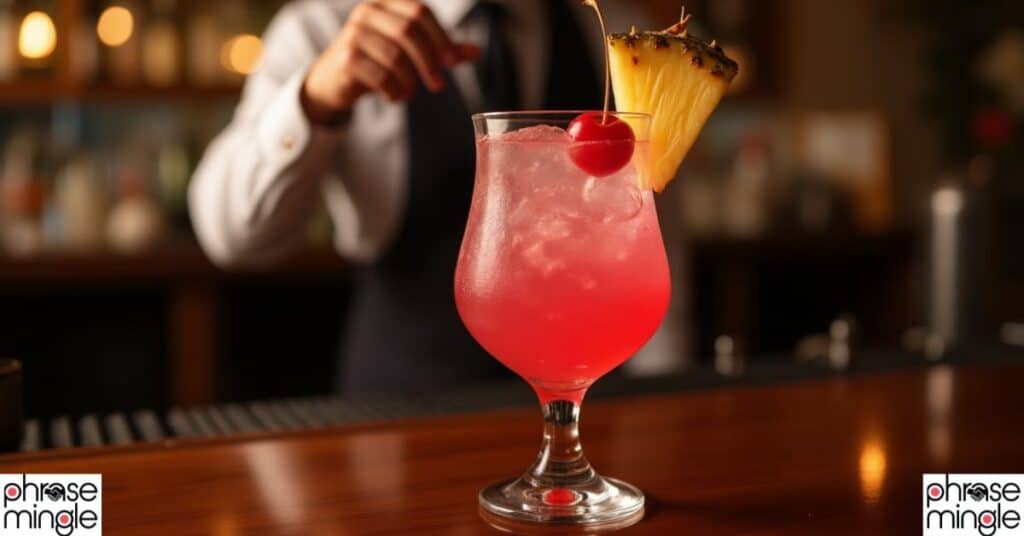
The Singapore Sling brings sophistication to cocktail culture through its complex combination of gin, cherry brandy, Cointreau, DOM Bénédictine, grenadine, pineapple juice, lime juice, and Angostura bitters. Created at Singapore’s Raffles Hotel in 1915, this cocktail became synonymous with tropical luxury.
The pink color and fruit forward flavor profile make it appealing to diverse palates, while the multiple ingredients create complexity that rewards careful sipping. Modern variations often simplify the recipe, though purists insist on the original formulation.
50. Sazerac
The Sazerac represents New Orleans cocktail heritage through its distinctive combination of rye whisky, sugar, Peychaud’s bitters, and an absinthe rinse. Recognized as New Orleans’ official cocktail, this drink showcases American whisky culture and Creole influences.
Proper preparation involves rinsing the glass with absinthe, then discarding the excess before adding the other ingredients. The result creates aromatic complexity that enhances the whisky‘s character while adding subtle herbal notes from the absinthe.
51. Sea Breeze
The Sea Breeze offers refreshing simplicity through vodka, cranberry juice, and grapefruit juice combinations that evoke coastal breezes and summer relaxation. This cocktail gained popularity during the 1970s as Americans embraced lighter, fruit forward drinks.
The pink color and tart sweet flavor profile make it particularly popular among consumers preferring less sweet cocktails. Fresh grapefruit juice significantly improves quality compared to processed alternatives, while cranberry juice provides color and balancing tartness.
52. Seven and Seven
Seven and Seven represents American whiskey culture through the simple combination of Seagram’s 7 Crown whisky and 7UP soda. This cocktail gained popularity during the mid 20th century when lighter, more approachable whisky drinks attracted broader audiences.
The soda‘s carbonation and citrus flavoring complement the whisky‘s smoothness while creating refreshing drinks suitable for casual occasions. The name’s alliteration made it memorable and easy to order, contributing to its widespread adoption.
53. Sloe Gin Fizz
The Sloe Gin Fizz brings Victorian elegance to modern cocktail culture through sloe gin, lemon juice, sugar, and soda water combinations. Sloe gin, made from sloe berries, offers distinctive flavor profiles that differ significantly from traditional gin.
The drink’s pink color and berry flavors appeal to consumers seeking unique cocktail experiences, while the fizz format provides refreshing carbonation. Quality depends heavily on sloe gin selection, as cheaper versions often rely on artificial flavoring.
54. Stinger
The Stinger showcases after dinner cocktail sophistication through cognac and white crème de menthe combinations that create warming yet refreshing nightcaps. Popular during the early to mid 20th century, this cocktail represents elegant simplicity.
The mint liqueur adds cooling elements that complement cognac’s warmth, while the drink’s strength makes it suitable for slow sipping. Served over ice or straight up, the Stinger appeals to consumers appreciating brandy based cocktails.
55. Stone Sour Drinks That Start With S
The Stone Sour extends whiskey sour traditions through the addition of orange juice, creating more complex flavor profiles than traditional sour cocktails. This drink balances whisky‘s character with citrus brightness and subtle sweetness.
Quality Stone Sours require fresh citrus juices and proper balance between sweet and sour elements. The orange juice addition makes it more approachable for consumers who find traditional whiskey sours too tart or strong.
56. Scorpion
The Scorpion brings tiki culture complexity through rum, brandy, orgeat syrup, orange juice, and lemon juice combinations that create tropical paradise in glass form. This potent cocktail often serves multiple people, emphasizing shared drinking experiences.
The multiple spirit combination creates complexity that rewards careful preparation and quality ingredients. Garnishes often include tropical fruits and elaborate presentations that enhance the drink’s appeal and social media worthiness.
57. Shandy
The Shandy represents British pub culture through beer and lemonade combinations that create refreshing, lower alcohol beverages suitable for extended drinking sessions. Traditional preparation uses half beer and half lemonade, though ratios vary by preference.
Modern variations include different beer styles and citrus combinations that expand flavor possibilities. The drink’s lower alcohol content makes it appropriate for daytime drinking or situations requiring moderation without complete abstinence.
58. Smith & Kearns
Smith & Kearns combines coffee liqueur, milk or cream, and soda water to create creamy, caffeinated cocktails with unique flavor profiles. This drink offers alternatives to traditional cream based cocktails while maintaining smooth, satisfying characteristics.
The coffee element provides both flavor and mild stimulation, while cream adds richness and soda water contributes refreshing carbonation. Quality depends on coffee liqueur selection and proper ingredient ratios.
59. Salty Dog
The Salty Dog elevates simple vodka and grapefruit juice combinations through salted rim presentations that enhance flavor complexity. This cocktail demonstrates how simple garnish modifications can transform basic drinks into sophisticated experiences.
The salt rim complements grapefruit’s natural tartness while adding textural interest. Quality depends on fresh grapefruit juice and proper salt rim preparation that doesn’t overwhelm the drink’s natural flavors.
60. Scarlet O’Hara
The Scarlet O’Hara brings Southern charm to cocktail culture through Southern Comfort, cranberry juice, and lime juice combinations that create approachable, fruit forward drinks. Named after the famous literary character, this cocktail emphasizes regional American flavors.
The cranberry juice provides beautiful color and tart sweetness, while Southern Comfort adds peachy complexity. The drink’s approachable flavor profile makes it popular among consumers preferring sweeter cocktails.
61. Saketini
The Saketini fuses Eastern and Western cocktail traditions by replacing gin with sake in martini preparations. This cocktail showcases sake’s subtle rice wine character while maintaining the martini‘s sophisticated presentation and serving style.
Quality Saketinis require premium sake selection that complements rather than competes with traditional martini garnishes like olives or lemon twists. The lower alcohol content makes it appealing to consumers seeking lighter martini alternatives.
62. Sapphire Martini
The Sapphire Martini showcases premium gin through Bombay Sapphire’s distinctive botanical blend, creating martinis with enhanced complexity and smoothness. This cocktail demonstrates how premium spirits can elevate classic preparations.
The gin’s botanical complexity provides aromatic interest that rewards careful sipping, while proper preparation and chilling maintain the martini‘s elegant character. Garnish selection can emphasize different botanical elements within the gin.
63. Smoky Martini
The Smoky Martini introduces Scottish whisky character to martini preparations, creating drinks that balance sophistication with warming complexity. This variation appeals to consumers seeking martini elegance with whisky richness.
Scotch selection significantly affects flavor profiles, with different regions and styles creating varying degrees of smokiness and complexity. Proper preparation maintains the martini‘s clean character while showcasing whisky‘s distinctive qualities.
64. Snickertini
The Snickertini brings dessert flavors to martini presentations through chocolate, caramel, and peanut combinations that recreate candy bar experiences in liquid form. This cocktail appeals to consumers seeking indulgent dessert alternatives.
Quality depends on ingredient selection that balances sweetness with alcohol content, preventing overly cloying results. The drink’s dessert character makes it appropriate for after dinner service or special occasion celebrations.
65. Soho Martini
The Soho Martini incorporates lychee liqueur to create martini variations that showcase Asian fruit flavors within classic cocktail frameworks. This drink demonstrates how international ingredients can enhance traditional preparations.
The lychee’s subtle sweetness and floral notes complement gin’s botanical character while adding aromatic complexity. Proper balance prevents the fruit flavors from overwhelming the martini‘s sophisticated character.
66. Silver Bullet Drinks That Start With S
The Silver Bullet substitutes tequila for gin in martini preparations, creating cocktails that showcase agave spirits within elegant presentations. This variation appeals to tequila enthusiasts seeking sophisticated serving formats.
Quality depends on premium tequila selection that provides smoothness suitable for straight consumption. Traditional martini garnishes may require adjustment to complement tequila’s distinctive agave character.
67. Surprised Martini
The Surprised Martini incorporates unexpected ingredients or preparations that challenge traditional martini expectations while maintaining elegant presentation standards. These cocktails showcase mixologist creativity and innovation.
Successful variations balance surprise elements with martini sophistication, creating memorable experiences without sacrificing quality. The element of surprise adds entertainment value to the drinking experience.
68. Something Blue
Something Blue incorporates blue curaçao to create visually striking martini variations that showcase vibrant color alongside traditional sophistication. This cocktail demonstrates how color can enhance presentation without sacrificing flavor quality.
The blue curaçao’s orange flavoring complements gin’s botanical character while creating Instagram worthy presentations. Quality depends on balancing the liqueur’s sweetness with the martini‘s dry character, preventing overly sweet results that compromise the drink’s sophisticated appeal.
69. Santa Shot
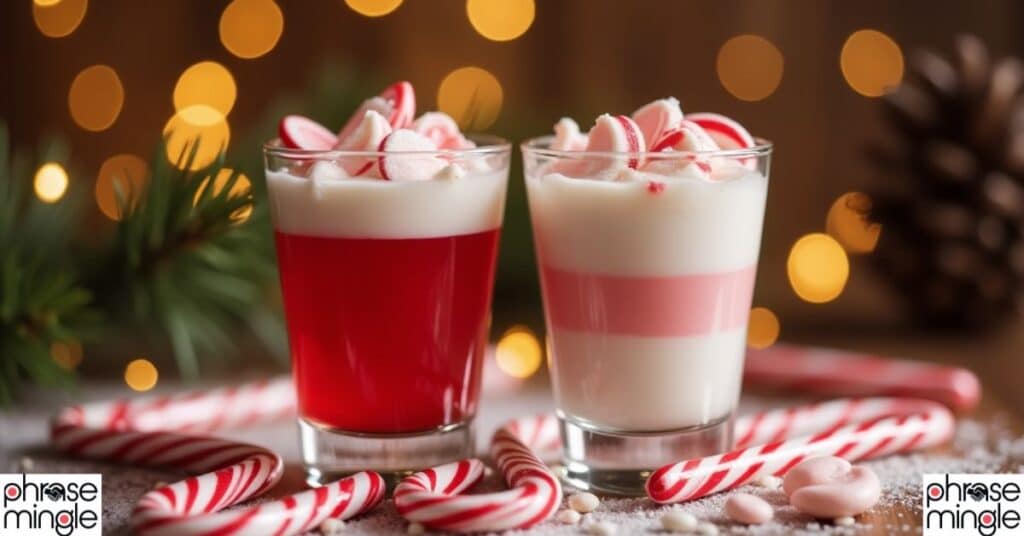
The Santa Shot brings holiday cheer to shot culture through peppermint and cranberry combinations that evoke Christmas flavors in concentrated form. This seasonal shot appeals to consumers seeking festive alternatives to traditional options.
Popular preparations include layered presentations that showcase red and white colors reminiscent of candy canes. The peppermint flavor provides cooling sensations that complement the shot‘s warming alcohol content, creating balanced holiday experiences.
70. Slammer
The Slammer combines tequila with carbonated beverages, creating shots that emphasize both flavor and interactive consumption methods. Traditional preparation involves covering the shot glass and slamming it on the bar to create carbonation explosion before quick consumption.
The theatrical element adds entertainment value to social drinking experiences, while the carbonation creates unique textural sensations. Quality depends on tequila selection and proper carbonated beverage pairing that enhances rather than masks the spirit’s character.
71. Snowball Shot
The Snowball Shot creates winter themed shots through creamy, white presentations that evoke snow and cold weather associations. Popular preparations include coconut rum, vanilla liqueur, and cream combinations that deliver smooth, dessert like experiences.
The creamy texture provides contrast to traditional shot harshness, appealing to consumers preferring smoother alcohol experiences. Garnishes often include coconut flakes or other white elements that enhance the winter theme.
72. Skeleton Key
The Skeleton Key brings Halloween mystery to shot culture through dark, complex preparations that emphasize spooky presentation alongside quality flavor profiles. These shots often incorporate multiple spirits and liqueurs to create complexity.
Color typically emphasizes dark purples, blacks, or deep reds that evoke Halloween themes, while flavor profiles balance sweetness with alcohol strength. The mysterious name and presentation add entertainment value to seasonal celebrations.
73. Stoplight
The Stoplight creates layered shots that showcase red, yellow, and green colors reminiscent of traffic signals. This shot demonstrates bartending skill through careful layering techniques that maintain distinct color separation.
Successful preparation requires understanding specific gravity differences between liqueurs and spirits, allowing for clean layer separation. The visual appeal makes these shots popular for social media sharing and group celebrations.
74. Swamp Water
Swamp Water brings mysterious, green colored shots to adventurous drinkers through combinations that emphasize unusual flavor profiles and murky presentations. These shots often incorporate multiple spirits and liqueurs for complexity.
The name and appearance create intrigue that appeals to consumers seeking unique drinking experiences. Quality depends on balancing unusual flavors with overall palatability, preventing novelty from overwhelming taste considerations.
75. Sangria
Sangria represents Spanish wine culture through red wine bases enhanced with fruit, spices, and sometimes spirits to create refreshing, social beverages. Traditional preparations vary by region, with each area claiming authentic recipes.
Modern variations include white wine versions and sparkling alternatives that expand appeal beyond traditional red wine preparations. Quality depends on wine selection and fruit freshness, with premium versions showcasing how simple ingredients can create sophisticated results.
76. Sparkling Wine
Sparkling Wine encompasses various carbonated wine styles from different regions worldwide, offering alternatives to champagne that provide effervescence and celebration associations. Popular styles include Prosecco, Cava, and American sparkling wines.
Quality varies significantly between production methods, with traditional champagne techniques generally producing superior results compared to tank fermentation methods. Understanding regional differences helps consumers select appropriate bottles for different occasions and budgets.
77. Sherry
Sherry represents Spanish fortified wine traditions through complex production methods that create diverse flavor profiles ranging from bone dry to dessert sweet. Different styles include Fino, Manzanilla, Amontillado, Oloroso, and Pedro Ximénez varieties.
Each style serves different purposes, from aperitif applications to dessert pairings. Understanding sherry categories helps consumers appreciate this versatile wine category that offers alternatives to traditional table wines.
78. Sake
Sake showcases Japanese rice wine traditions through careful fermentation processes that create clean, subtle flavors distinct from grape based wines. Quality grades include Junmai, Honjozo, Ginjo, and Daiginjo categories that reflect rice polishing and production methods.
Serving temperatures and methods significantly affect flavor perception, with some styles benefiting from chilling while others shine at room temperature. Understanding sake categories helps consumers navigate this complex beverage category.
79. Scotch Whisky
Scotch Whisky represents Scottish distilling traditions through single malt and blended varieties that showcase regional characteristics and aging techniques. Different regions including Speyside, Highlands, Islay, and Lowlands produce distinctive flavor profiles.
Quality depends on factors including water source, barley selection, distillation methods, and aging processes. Understanding these variables helps consumers appreciate whisky complexity and select bottles appropriate for different occasions and preferences.
80. Southern Comfort
Southern Comfort combines American whisky with peach and fruit flavors to create distinctive liqueurs that bridge spirits and flavored alcohol categories. This brand became synonymous with Southern American culture and hospitality.
The peach flavor provides sweetness that makes whisky more approachable for consumers preferring smoother spirits. Popular applications include shots, cocktails, and mixed drinks that emphasize the liqueur’s fruit character.
81. Sambuca
Sambuca brings Italian anise liqueur traditions to international markets through distinctive licorice flavors and traditional serving methods. Clear and black varieties offer different flavor intensities and presentation options.
Traditional preparation involves floating coffee beans that provide aromatic contrast to anise flavors. The strong flavor profile makes sambuca polarizing, with consumers typically loving or avoiding its distinctive taste.
82. Schnapps
Schnapps encompasses various fruit brandies and flavored spirits that originated in German speaking regions but gained popularity worldwide. Popular flavors include peach, apple, peppermint, and butterscotch varieties.
Quality varies significantly between authentic German schnapps and American flavored versions, with traditional preparations emphasizing fruit authenticity over artificial flavoring. Understanding these differences helps consumers select appropriate products.
83. Soju
Soju represents Korean clear spirit traditions through rice or grain distillation that creates smooth, neutral flavors suitable for various consumption methods. This spirit has gained international popularity through Korean cultural exports.
Traditional serving involves small glasses and group consumption rituals that emphasize social bonding. Modern flavored versions cater to international palates while maintaining the spirit’s accessible character.
84. Skrewball Whiskey
Skrewball Whiskey innovated flavored whisky categories through peanut butter infusions that create distinctive taste profiles appealing to adventurous consumers. This brand demonstrated how unconventional flavors could succeed in traditional spirit categories.
The peanut butter flavor provides sweetness and richness that makes whisky more approachable for consumers preferring flavored spirits. Popular applications include shots, martinis, and creative cocktails that emphasize the unique flavor profile.
85. Skyy Vodka
Skyy Vodka positioned itself as premium American vodka through distinctive packaging and marketing that emphasized purity and sophistication. The brand’s success demonstrated how effective branding could compete with traditional vodka producing regions.
Quality focuses on smoothness and neutral character that makes it suitable for both straight consumption and cocktail applications. The brand’s consistent quality and availability made it popular in bars and restaurants nationwide.
86. Shamrockarita
The Shamrockarita fuses Irish and Mexican cocktail traditions through whisky and margarita combinations that create unique flavor profiles for St. Patrick’s Day celebrations. This cocktail demonstrates how cultural fusion can create memorable drinking experiences.
Popular preparations include Irish whisky, lime juice, and triple sec combinations that maintain margarita character while showcasing whisky complexity. The green color and cultural associations make it popular for themed celebrations.
87. Smirnoff Ice
Smirnoff Ice pioneered the malt beverage category by combining vodka flavoring with carbonated, sweetened bases that appeal to consumers preferring lighter alcoholic drinks. This product category bridges beer and spirits markets.
The sweet, approachable flavor profile attracted consumers who found beer too bitter or spirits too strong. Marketing emphasized fun, social consumption that positioned the product as accessible luxury for younger demographics.
88. Sparks
Sparks combined alcohol with caffeine to create controversial beverages that provided both intoxication and stimulation. This product category faced regulatory challenges due to health concerns about mixing alcohol with stimulants.
The combination appealed to party oriented consumers seeking extended energy for nightlife activities. However, health authorities eventually restricted or banned such products due to potential adverse effects from alcohol caffeine combinations.
89. Strawberry Daiquiri
The Strawberry Daiquiri extends classic daiquiri traditions through fruit additions that create sweeter, more approachable cocktails. Frozen versions became particularly popular in tropical destinations and beach themed establishments.
Quality depends on fresh fruit usage versus artificial flavoring, with premium versions showcasing how natural ingredients enhance classic cocktail frameworks. The drink’s pink color and fruit flavors appeal to consumers preferring sweeter options.
90. Spicy Tamarind Cocktails
Spicy Tamarind Cocktails represent contemporary flavor trends that combine sweet, sour, and spicy elements in complex cocktail presentations. These drinks showcase how international ingredients can enhance modern mixology.
Tamarind provides distinctive tartness that complements various spirits, while spicy elements add complexity and heat. These cocktails appeal to adventurous consumers seeking unique flavor experiences beyond traditional options.
Mixing & Serving Suggestions
Essential bar tools for S cocktail preparation include quality shakers, strainers, jiggers, and muddlers that ensure consistent results. Martini preparations require proper stirring techniques, while smoothies benefit from high powered blenders that create smooth textures.
Garnish recommendations vary by drink category, with citrus twists enhancing spirit forward cocktails while fresh fruit complements smoothies and tropical drinks. Grenadine adds color and sweetness to various cocktails, but quality differs significantly between brands.
Glassware selection affects both presentation and flavor perception. Martini glasses showcase elegant cocktails, while rocks glasses suit spirit forward drinks. Smoothie glasses should accommodate generous portions while maintaining easy handling.
Temperature considerations prove crucial for optimal flavor delivery. Cocktails generally benefit from proper chilling, while tea temperatures affect extraction and flavor development. Soda and sparkling water maintain better carbonation when kept cold.
Health & Nutrition Insights
Calorie comparisons reveal significant differences across categories, with smoothies potentially containing more calories than some alcoholic drinks due to fruit and dairy content. Soy milk provides complete proteins while sparkling water offers hydration without calories.
Antioxidant benefits appear primarily in fruit based drinks, with berry smoothies and tea varieties providing significant nutritional value. However, added sugars in commercial preparations can offset health benefits.
Moderation guidelines for alcoholic drinks recommend limiting consumption to maintain health benefits while avoiding negative effects. Understanding alcohol content helps consumers make informed choices about consumption levels.
Hydration factors vary significantly between beverage types, with sparkling water and tea contributing to daily fluid intake while alcoholic drinks may have dehydrating effects that require balancing with water consumption.
Shopping & Storage Advice for Drinks That Start With S
Specialty Drinks That Start With S ingredients often require visits to well stocked liquor stores or international markets. Sake and premium whisky selections benefit from knowledgeable staff who can recommend appropriate bottles for different applications.
Shelf life considerations vary dramatically between categories. Soda and sparkling water maintain quality for extended periods when properly stored, while fresh smoothie ingredients require regular replacement.
Budget friendly alternatives include store brands for basic sodas and mixers, while premium spirits justify higher costs through superior flavor and quality. Smoothie ingredients can be purchased frozen to reduce costs and extend availability.
Seasonal availability affects fresh fruit smoothie ingredients and specialty cocktail components. Planning purchases around peak seasons ensures optimal quality while managing costs effectively.
Cultural & Historical Context
Regional preferences for S named beverages reflect local traditions and available ingredients. Sweet tea dominates Southern American culture, while sake represents Japanese traditions that have gained international appreciation.
Globalization has spread Drinks That Start With S worldwide, with Sprite and other sodas achieving nearly universal availability. However, local variations often adapt to regional taste preferences and ingredient availability.
Celebrity endorsements and pop culture influences have shaped Drinks That Start With S popularity, with social media driving trends toward visually appealing beverages like colorful smoothies and elaborate cocktails.
Future trends in Drinks That Start With S innovation include functional beverages that combine nutrition with flavor, sustainable packaging solutions, and craft versions of traditional preparations that emphasize quality ingredients and authentic preparation methods.
Conclusion:
This comprehensive exploration of 90 drinks that start with S reveals the incredible diversity available within this single letter. From simple sodas to sophisticated cocktails, from nutritious smoothies to traditional tea preparations, Drinks That Start With S offer something for every palate and occasion.
Non alcoholic drinks provide refreshment, nutrition, and cultural experiences without alcohol’s effects, while alcoholic drinks offer social lubrication and sophisticated flavor profiles for adult consumers. Understanding the full spectrum helps you make informed choices for different situations.
Whether you’re mixing your first Shirley Temple mocktail, perfecting Sprite based combinations, exploring soy milk alternatives, brewing perfect sweet tea, creating shake masterpieces, enjoying Slurpee summers, making slushie memories, discovering Snapple varieties, appreciating Seagram’s ginger ale quality, or reminiscing about Sunny D childhood moments, each Drinks That Start With S offers unique experiences worth exploring.
Your Drinks That Start With S journey starts with curiosity and continues with experimentation. Try new combinations, explore international varieties, and discover how these 90+ options can enhance your beverage experiences. Share your discoveries with friends and family, creating memories around the drinks that bring people together.
The world of Drinks That Start With S awaits your exploration which will you try first?

Jamze Hope,
I am a writer at Phrase Mingle, where i shares insightful phrase guides to help readers enhance their language skills. With a passion for words and clear communication, Jamze creates engaging content that simplifies complex expressions, making them accessible to all.







